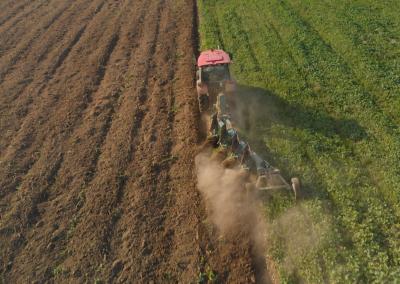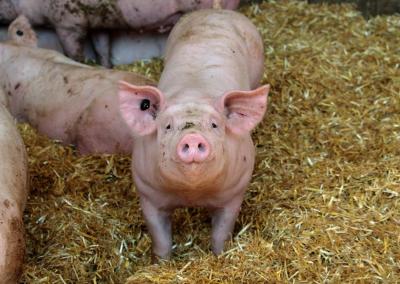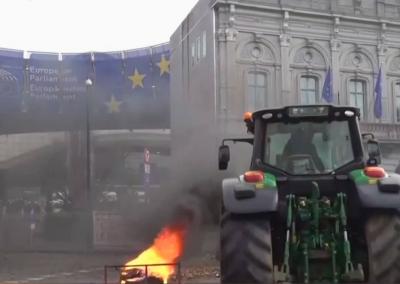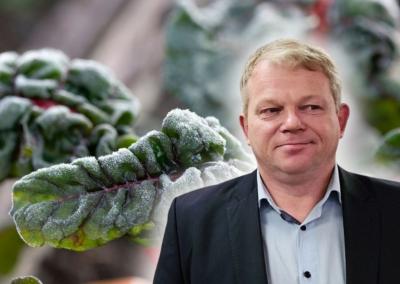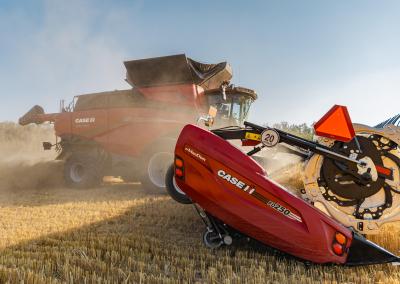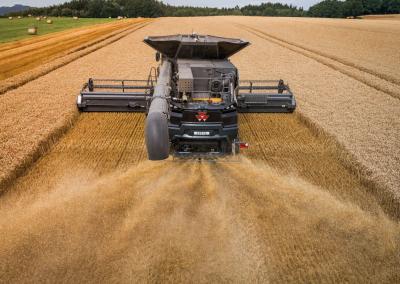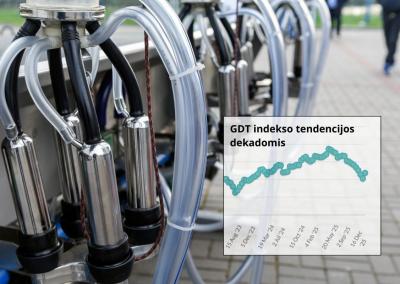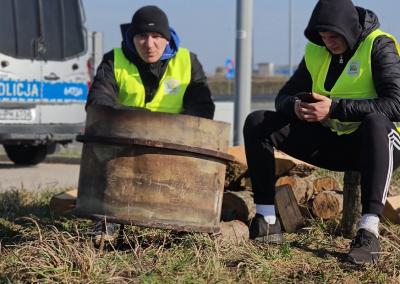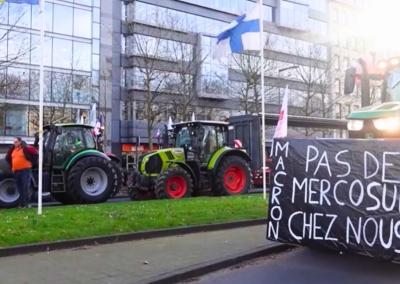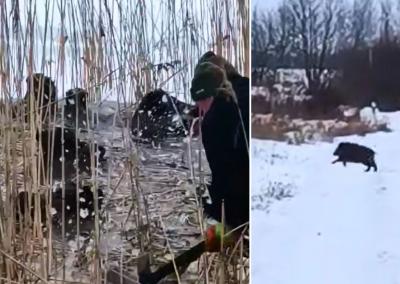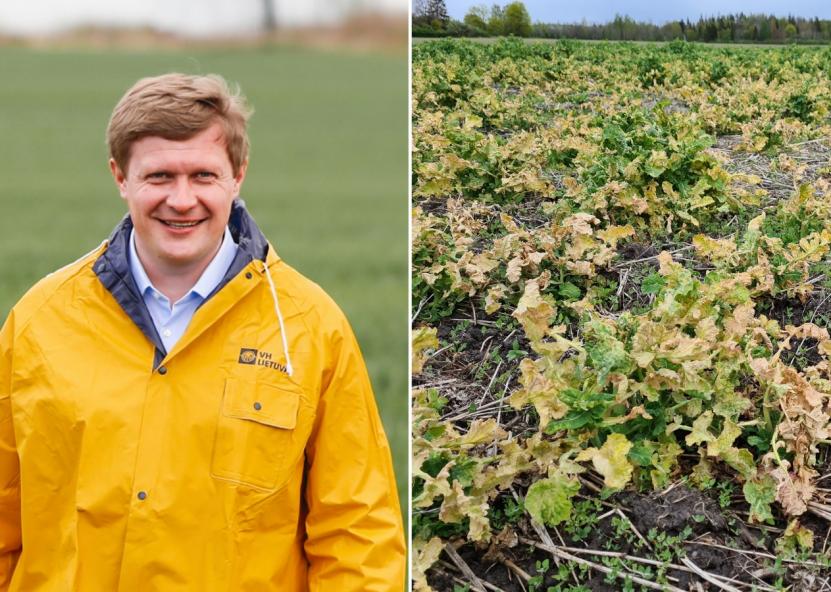VH Lietuva: farmers value most the possibility to choose between 1 and 8 risks
The German crop mutual fund „Vereinigte Hagel“ (VH), which operates in 10 countries and has a branch „VH Lithuania“, celebrates its 200th anniversary. We talk to Martynas Rusteika, Branch Manager of „VH Lietuva“, about the experience of more than 110,000 insured farmers and the latest news for this season.
A period of intense weather changes has begun, with heat being replaced by heavy rain and hail. How are the crops currently looking after the stormy rainfall? What do crops look like in different parts of the country?
We have a significant number of reports from farmers on summer risks: 97 reports of hail & hailstones affecting more than 3 000 ha, 178 reports of torrential rain affecting around 6 000 ha. The meteorological events are spread across different regions of Lithuania and we are receiving new reports every day. For example, a couple of days ago we had to adjust the damage to onions, and yesterday hailstorms came through again and damaged the same onion fields.
We are monitoring the damaged area, looking at the stage of development of the plants, it is too early to think about harvesting, we are focusing on monitoring, because the damage could still increase. It is likely that this will not be the last damage suffered in the same fields.
At the same time, we are already in the process of finishing frost damage control – this spring we have received 236 reports of frost damage, affecting more than 10,000 hectares of land, mainly in central and north-west Lithuania. The losses – vary widely. Where the soil is peaty, the damage is greater. In general, the plants had good conditions to survive the stress caused by the frost: rain and sun are the two main medicines to help the plants recover. The rape has recovered and looks good. The minimal stress even benefited the plants, with the frost acting as a growth regulator. Therefore, there are no major frost losses this year.
We have treated several fields for snow damage. Snow can't do anything to plants without frost: if the snowfall is evenly distributed – it gives the plants a good start for spring.
What are the prevailing trends in crop insurance in Europe and how do they correlate with the Lithuanian market?
The situation in Europe is ominous. We spoke to „Vereinigte Hagel“ colleagues from 10 European countries and they told us their situation. In the Netherlands and Belgium, hailstorms struck crops early, causing severe damage to a wide range of crops, particularly fruit trees, and more than €20 million in payments have now been calculated. Colleagues currently have no undamaged fields.
German crop fields have also recorded heavy losses, particularly in the south, with frost damaging large areas of vineyards. In Germany, around €500 million in crop losses have already been recorded this year, of which around €100 million will be paid out to farmers by the „Vereinigte Hagel“ in insurance payments. Not all the affected winegrowers were insured.
In northern Italy, crop damage is also being intensively recorded, with constant reports of hailstorms.
At the end of May, temperatures in western and northern Poland dropped to -8 degrees and frost damaged flowering oilseed rape fields, so colleagues are intensively assessing the damage – it is good that the frost did not arrive in Lithuania, which is about 150 kilometres from the southern border of Lithuania.
Lithuania escaped very heavy overwintering losses this year, avoiding frost damage that was densely recorded in the Latvian region, 50 km from the Lithuanian border. Frosts damaged crops in all northern European countries and fortunately did not severely affect Lithuanian fields.
Lithuanian farmers can rest assured for now. And the potential yields today look really good. Of course, yields need to be counted once they are in farmers' granaries. There is still plenty of time before then, and the summer period is just getting underway.
Farmers suffer losses of one kind or another every day. We are reacting promptly, trying to keep farmers calm and to keep our own minds cool. Because we receive a lot of reports of losses every day from different regions of Lithuania.
How popular is hail insurance?
As hailstorms are more and more frequent and intense in Lithuanian fields, hail insurance is becoming really relevant and popular among farmers. Hail used to be seen as a localised risk, but now it has become a systemic risk. Last year, hailstorms started in the Trakai region and continued in several directions as far as the Baltic Sea in Latvia. The damaged area exceeded 55,000 hectares and more than €25 million was paid out to Latvian and Lithuanian farmers that day.
This year, at the end of May, we already had 87 hail notifications, and with about one and a half months to go before the rapeseed threshing, the harvesting of cereals, I think the number of notifications will increase. Farmers themselves are actively guarding against the risk of hail, because hail is so „crossing“ that it harvests the crop for them – they don't even have to take the combine harvester to the field. And the name „Vereinigte Hagel“ is German for „hail insurance“. Hail is the most relevant and popular hail risk for farmers across the European continent.
What kind of insurance do you currently offer to farmers?
How do farmers themselves feel about crop insurance? To what extent is it becoming more popular?The number of farmers in Lithuania with crop insurance has increased by about 20 percent this year. Importantly, smaller farms of 10 hectares or more are increasingly joining. We have a special insurance for small farms, and farmers are increasingly using it and getting involved, because at the beginning, farming may seem like a hobby for small farmers, but when they have to deal with losses for several years in a row, their attitude to crop insurance changes.
The effects of climate change are encouraging farmers themselves to take more interest in protecting their crops. We certainly didn't think that the insurance service would be so flexible that we would be able to choose from 1 to 8 insured risks – hail, torrential rain, storm, frost, frost, fire, drought, prolonged rainfall, and the various additional features of these risks!


